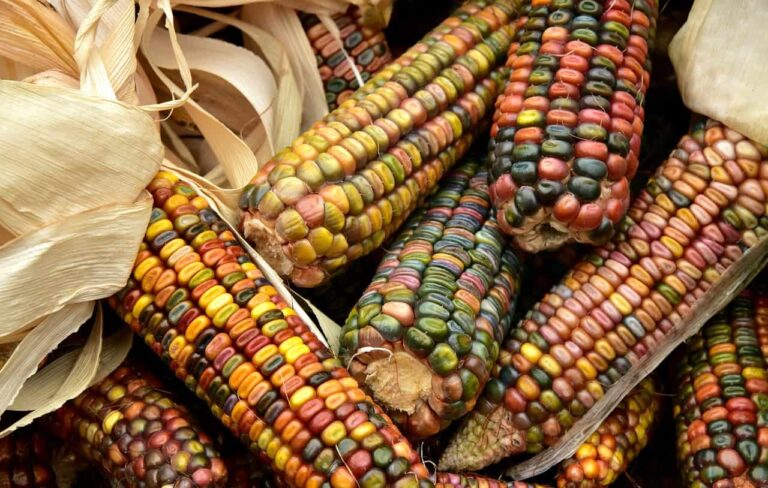
Growing a Greener Future: Exploring the Power of Environmentally Friendly Crops
Environmentally friendly crops, also known as sustainable or eco-friendly crops, refer to agricultural practices and crops that have minimal negative environmental impacts.
These crops are cultivated using sustainable farming practices that prioritize soil health, water conservation, and biodiversity preservation. They aim to reduce greenhouse gas emissions, avoid soil erosion, and minimize the use of synthetic fertilizers and pesticides. Environmentally friendly crops contribute to the sustainability of our food systems by promoting healthy soil structure, increasing crop yields, and preserving water and other finite resources.
They are essential components of sustainable agriculture and play a crucial role in ensuring a healthy and prosperous future for both current and future generations. These crops include a wide range of options, such as leafy greens, kidney beans, pinto beans, and other excellent sources of protein. By choosing environmentally friendly crops, we can reduce our carbon footprint, improve the quality of our food, and protect the environment for a better quality of life.
Overview of the Topic
Sustainable agriculture is a holistic approach to farming that aims to minimize the environmental impacts while maximizing the social and economic benefits. It takes into consideration the long-term well-being of the environment, the farmers, and the communities they serve. However, the implementation of sustainable agriculture is not without its challenges.
Social, environmental, and economic barriers can hinder the adoption of sustainable agricultural practices. Social barriers may include a lack of awareness or understanding of the benefits of sustainable practices, resistance to change from farmers, and the need for education and training.
Environmental barriers can encompass issues such as soil erosion, water pollution, and greenhouse gas emissions, which can negatively impact the quality of our water resources and the health of our planet. Economic barriers might involve the costs associated with transitioning from conventional to sustainable farming methods.
To overcome these barriers, it is essential to promote behavioral changes among both farmers and consumers. Farmers can be encouraged to adopt sustainable practices such as crop rotations, cover crops, and organic farming, which promote healthy soil and reduce reliance on chemical fertilizers and pesticides. Consumers, on the other hand, can support sustainable agriculture by choosing locally sourced and organic foods, reducing food waste, and advocating for sustainable farming practices in their communities.
Local farming and community gardens also hold great potential in promoting sustainable agriculture. These initiatives not only provide fresh and healthy produce to local communities but also foster a sense of connection and stewardship towards the environment. Through the collaboration of farmers, consumers, and communities, we can work towards building a more sustainable food system that ensures the well-being of both present and future generations.
Environmental Impacts
When it comes to agriculture, the environmental impacts are a crucial consideration. Conventional farming practices often contribute to soil erosion, water pollution, and greenhouse gas emissions, which can have severe consequences for the health and quality of our ecosystems.
To mitigate these negative impacts, the adoption of sustainable practices is essential. Sustainable agriculture focuses on minimizing these environmental footprints by implementing methods like crop rotations, cover crops, and organic farming techniques. These practices promote soil health and fertility, reduce the reliance on chemical fertilizers and pesticides, and help reduce greenhouse gas emissions.
By prioritizing sustainable farming practices, we can protect our natural resources, preserve biodiversity, and secure a healthier and more sustainable future for both our planet and future generations.
What is a Carbon Footprint?
A carbon footprint refers to the total amount of greenhouse gas emissions generated by an individual, organization, or product throughout its lifecycle. In the context of agriculture and food production, a carbon footprint is the measurement of emissions resulting from various activities involved in cultivating, processing, packaging, and transporting food.
The agricultural sector contributes significantly to carbon emissions. Factors that contribute to these emissions include the use of fossil fuels for machinery and equipment, the production and application of synthetic fertilizers, deforestation for agricultural expansion, and the management of animal waste. These emissions have significant implications for the environment, such as global warming, climate change, and the alteration of ecosystems.
To mitigate the environmental impacts of carbon emissions, sustainable foods and farming practices are becoming increasingly important. Sustainable agriculture aims to minimize the carbon footprint by focusing on organic farming techniques, reducing chemical inputs, optimizing soil health and fertility, practicing crop rotations, and managing water resources efficiently. By adopting such practices, farmers can reduce greenhouse gas emissions, protect soil structure, and enhance crop yields. Additionally, consumers can contribute to a smaller carbon footprint by choosing locally sourced foods to reduce food miles, opting for plant-based diets with lower environmental impacts, and supporting sustainable food systems.
Understanding and addressing the carbon footprint in agriculture and food production is crucial for reducing environmental impacts and ensuring a sustainable future. By prioritizing sustainable foods and farming practices, we can decrease carbon emissions, protect the environment, and provide a healthier and more prosperous future for generations to come.
How do Agricultural Practices Affect Carbon Emissions?
Agricultural practices play a crucial role in determining carbon emissions in the context of environmentally friendly crops. Sustainable agriculture, with its focus on reducing carbon emissions, promotes practices that minimize the negative environmental impacts associated with farming.
One key practice is crop rotation, which involves alternating different crop species in a particular field over time. By diversifying crops, farmers can improve soil health and fertility, reduce the need for synthetic fertilizers, and break pest and disease cycles. This results in lower carbon emissions as fewer chemical inputs are required.
Another practice is the use of cover crops, which are planted during fallow periods or after the main crops are harvested. Cover crops improve soil structure, increase organic matter, and help sequester carbon from the atmosphere. They also reduce soil erosion and enhance water infiltration, promoting more efficient water use.
Reduced tillage is another technique that can significantly impact carbon emissions. By minimizing soil disturbance and keeping crop residues on the ground, farmers can improve soil structure and increase carbon storage in the soil. This reduces the release of carbon dioxide, a major greenhouse gas, into the atmosphere.
Integrated pest management is also a key component of sustainable agriculture. By utilizing a range of techniques like biological control, crop rotation, and habitat manipulation, farmers can minimize the use of synthetic pesticides. This not only reduces carbon emissions associated with pesticide production but also protects biodiversity and promotes natural pest control mechanisms.
Overall, agricultural practices such as crop rotation, cover crops, reduced tillage, and integrated pest management have a significant impact on carbon emissions. By adopting sustainable agriculture techniques, farmers can contribute to mitigating climate change and creating a healthier environment for future generations.
What are the Negative Impacts of Traditional Farming Practices?
Traditional farming practices can have several negative impacts on the environment, communities, and farmworkers. One major concern is topsoil depletion. Traditional farming methods often involve intensive tillage, which can lead to erosion and the loss of valuable topsoil. This depletion of topsoil affects soil fertility and reduces crop yields over time.
Another concern is groundwater contamination. Traditional farming practices often rely on the use of chemical fertilizers and pesticides, which can leach into the soil and contaminate groundwater sources. This contamination not only poses a risk to human health but also impacts the health of aquatic ecosystems.
Traditional farming practices can also contribute to the degradation of rural communities. The use of synthetic inputs, such as chemical fertilizers and pesticides, can lead to dependency on external sources and increase production costs for farmers. This can result in economic hardships for rural communities and can lead to a loss of diversity and resilience in the farming system.
Furthermore, farmworkers may experience poor working conditions due to the use of hazardous chemicals in traditional farming practices. Exposure to chemical pesticides and fertilizers can pose health risks and contribute to respiratory problems, skin irritations, and other long-term health issues.
Finally, traditional farming practices often require high inputs of water, energy, and resources, leading to increased production costs. This can make farming less economically viable for small-scale farmers and contribute to the financial challenges faced by rural communities.
Overall, traditional farming practices have negative impacts on topsoil depletion, groundwater contamination, rural communities, farmworker conditions, and production costs. Transitioning to more sustainable and environmentally friendly farming practices can help mitigate these negative effects and create a more resilient and sustainable food system.
What are the Benefits of Organic Farming?
Organic farming offers numerous benefits that make it a sustainable and environmentally friendly practice. One of the key advantages is the elimination of synthetic pesticides. Instead, organic farmers use natural alternatives, like crop rotation and biological pest control, to manage pests and diseases. This greatly reduces environmental contamination, protecting wildlife and safeguarding the health of ecosystems.
Another benefit of organic farming is the promotion of healthy soil. Organic farmers prioritize soil health by incorporating organic matter, like compost and cover crops, into their fields. This enriches the soil with essential nutrients and enhances its structure, allowing for better water retention and reducing the risk of erosion. Moreover, healthy soil encourages beneficial microorganisms and earthworms, contributing to a thriving and balanced ecosystem.
Organic farming also encourages sustainable practices. Farmers focus on crop diversity and rotation, which helps to naturally suppress pests and diseases while maintaining soil fertility. This reduces the dependence on chemical inputs and creates a more resilient and sustainable farming system.
However, it’s important to note that organic farming can also have downsides. It requires more manual labor and can be more time-consuming compared to conventional methods. Additionally, organic farmers may need to use organic fungicides to control certain diseases, although they are subject to strict regulations. Despite these challenges, the environmental benefits and promotion of sustainable practices make organic farming an excellent choice for the future of agriculture.
Sustainable Foods
Sustainable foods, also known as eco-friendly or environmentally friendly crops, are grown using agricultural practices that prioritize the well-being of the planet and future generations.
These crops aim to minimize negative environmental impacts, such as carbon emissions, water pollution, and soil erosion, while promoting healthy soil and sustainable farming systems. By focusing on sustainable practices, these crops contribute to the conservation of natural resources, support biodiversity, and help create a more resilient and sustainable food system.
Sustainable foods are often organic, grown without the use of synthetic fertilizers or pesticides, and incorporate practices such as crop rotation and the use of cover crops to maintain soil health and fertility. They are an excellent source of healthy food and play a crucial role in reducing the environmental footprint of the agricultural industry.
What Types of Foods Can be Considered Sustainable?
When it comes to sustainable foods, plant-based options are at the forefront. Foods such as leafy greens, kidney beans, and pinto beans can all be considered sustainable choices due to their lower environmental impact. Plant-based foods have been found to have a significantly lower carbon footprint and greenhouse gas emissions compared to animal-based protein sources.
In fact, the World Wildlife Fund’s Future 50 Foods report recommends incorporating more sustainable foods into our diets. This report highlights the importance of supporting biodiversity and reducing greenhouse gas emissions through the consumption of these plant-based options.
By choosing sustainable foods, we can contribute to a healthier planet and better quality of life for future generations. It is not only good for the environment but also a healthier choice for ourselves. These foods not only provide the necessary nutrients but also support healthy soil and water resources. So, consider opting for sustainable foods to reduce your environmental footprint and support a more eco-friendly food system.
Are Leafy Greens and Other Vegetables Sustainable?
Leafy greens and other vegetables are highly sustainable crops with minimal environmental impacts and a low carbon footprint. When grown using organic farming practices, these crops contribute to the overall health and sustainability of our food system.
One of the key benefits of leafy greens and other vegetables is their minimal environmental impacts. Compared to animal protein sources, they have significantly lower greenhouse gas emissions. They also require fewer resources, such as water and land, to produce a pound of food. Additionally, these crops help prevent soil erosion and maintain soil structure by providing vital organic matter.
Organic farming is a sustainable practice that further enhances the environmental benefits of leafy greens and other vegetables. By avoiding the use of chemical fertilizers and synthetic pesticides, organic farmers protect both the soil and water quality. They focus on promoting soil health through practices like crop rotation, cover cropping, and the use of compost, which in turn improves the crop yield and overall farm productivity.
By incorporating leafy greens and other vegetables into our diets, we contribute to sustainable food systems and help preserve the health of our planet. Choosing organic options not only benefits our own health but also ensures a better quality of life for future generations. Let’s embrace these sustainable practices and support the production and consumption of leafy greens and other vegetables.
How Can Consumers Identify Sustainable Sources of Protein?
Consumers can identify sustainable sources of protein by considering several factors. Firstly, they should pay attention to the type of protein they choose. Opting for plant-based protein sources like beans, lentils, or tofu is a more sustainable choice compared to animal-based proteins. These plant-based options have a significantly lower environmental footprint, with reduced greenhouse gas emissions and water usage.
Secondly, consumers can look for certifications that indicate sustainable protein sources. The organic certification ensures that the protein comes from livestock raised without synthetic pesticides or chemical fertilizers. Grass-fed certification indicates that animals were fed a natural diet of grass, which promotes more sustainable farming practices. Free-range certification guarantees animals had access to outdoor spaces, allowing for more natural behaviors and better overall welfare.
Consumers should also consider the source of their seafood protein. Choosing sustainably caught or farmed fish can make a significant difference. Sustainable seafood certifications like the Marine Stewardship Council (MSC) or Aquaculture Stewardship Council (ASC) indicate that the fishery or farm operates in an environmentally responsible manner, ensuring the preservation and sustainable use of marine resources.
Consumers can identify sustainable sources of protein by opting for plant-based options, looking for certifications like organic, grass-fed, free-range, MSC, or ASC, and considering the environmental impact of their protein choices. Making conscious decisions about the type of protein and how it is produced can contribute to a more sustainable food system.
Is There a Wide Range of Sustainable Food Options Available to Consumers?
The focus on sustainability has led to an increasing demand for food options that have low environmental impacts, are nutritionally adequate, and optimize natural and human resources. Fortunately, consumers have a wide range of sustainable food options to choose from, including those highlighted in the World Wildlife Fund’s Future 50 Foods report.
This report identifies 50 plant-based foods that are not only delicious but also have a smaller environmental footprint compared to traditional staples. Some of these sustainable food options include lentils, chickpeas, quinoa, chia seeds, seaweed, and algae. These foods have low greenhouse gas emissions, require less water, and can be grown in a variety of climates, making them more sustainable choices.
In addition to plant-based options, sustainable protein sources can include insects, such as crickets and mealworms, which have a significantly lower environmental impact compared to traditional livestock. These alternative protein sources require fewer resources, emit fewer greenhouse gases, and have a smaller land footprint.
By incorporating these sustainable food options into our diets, we can contribute to sustainable diets that meet our nutritional needs while minimizing negative environmental impacts. Choosing these foods promotes biodiversity, reduces deforestation, conserves water resources, and supports sustainable farming practices. This not only ensures a healthier planet but also contributes to a higher quality of life for future generations.
There is indeed a wide range of sustainable food options available to consumers. From plant-based staples to alternative protein sources, these foods offer low environmental impacts, are nutritionally adequate, and optimize natural and human resources, making them excellent choices for sustainable diets.
How Far Do “Food Miles” Travel for Sustainably Grown Foods?
When it comes to sustainably grown foods, one important concept to consider is “food miles.” Food miles refer to the distance that food travels from the farm to the consumer’s plate. This concept is closely tied to sustainable food options as it emphasizes the importance of reducing transportation distances.
Choosing sustainably grown foods that are locally sourced can greatly minimize food miles. For example, opting for locally grown leafy greens instead of imported ones can significantly reduce the distance these foods travel. By doing so, we can lower the carbon emissions associated with transportation and reduce the overall environmental impact.
Reducing transportation distances for sustainable food options has several benefits. Firstly, it helps to lower the use of fossil fuels in transportation, leading to a decrease in greenhouse gas emissions. Additionally, by choosing foods that are grown closer to home, we support local farmers and contribute to the development of sustainable food systems in our own communities.
By opting for sustainably grown foods with reduced food miles, we not only reduce our environmental impact but also optimize natural and human resources. It allows us to support local economies, promote sustainable farming practices, and ensure that our food choices align with our commitment to a healthier planet.
The concept of food miles reminds us to consider the distance our food travels. By choosing sustainably grown foods with shorter transportation distances, we can reduce our environmental impact and contribute to the development of sustainable food systems.
Healthy Soil and Fertility Management
In order to cultivate environmentally friendly crops, it is crucial to prioritize healthy soil and fertility management practices. Healthy soil provides the necessary nutrients and minerals that crops need to thrive, while also promoting biodiversity and enhancing the quality of life for future generations.
By implementing sustainable agricultural practices such as organic farming and crop rotations, we can protect soil structure, prevent soil erosion, and minimize the need for chemical fertilizers and synthetic pesticides. Additionally, cover crops and crop residues can be utilized to enhance soil fertility, increase organic matter, and improve water per pound efficiency.
Through these sustainable practices, we can ensure that our crops are grown in a manner that promotes soil health, reduces carbon emissions, and contributes to a more sustainable industrial agriculture system.
What Steps Can Farmers Take To Promote Healthy Soil Health and Fertility?
To promote healthy soil health and fertility, farmers can take several steps that contribute to sustainable farming practices. One effective method is to use organic amendments such as manure, compost, worm castings, and seaweed. These natural materials enrich the soil with essential nutrients and organic matter, improving its overall quality.
Another beneficial step is planting cover crops like oats, rye, or clover. These cover crops serve as green manure, adding organic matter to the soil when they are incorporated back into the earth. Additionally, they offer other advantages such as fixing nitrogen, which helps replenish this crucial nutrient in the soil.
By implementing these practices, farmers can enhance soil structure and reduce erosion, ensuring soil health for long-term sustainability. The use of organic amendments and cover crops also aids in restoring depleted soil nutrients and microorganisms, bolstering soil fertility.
The benefits of these steps go beyond the farm level. They contribute to sustainable farming and have positive environmental impacts, such as reducing the need for chemical fertilizers and synthetic pesticides. Ultimately, these practices promote healthy soil, making it an excellent source of nutrients and supporting sustainable food systems that benefit not only present generations but also future ones.


































